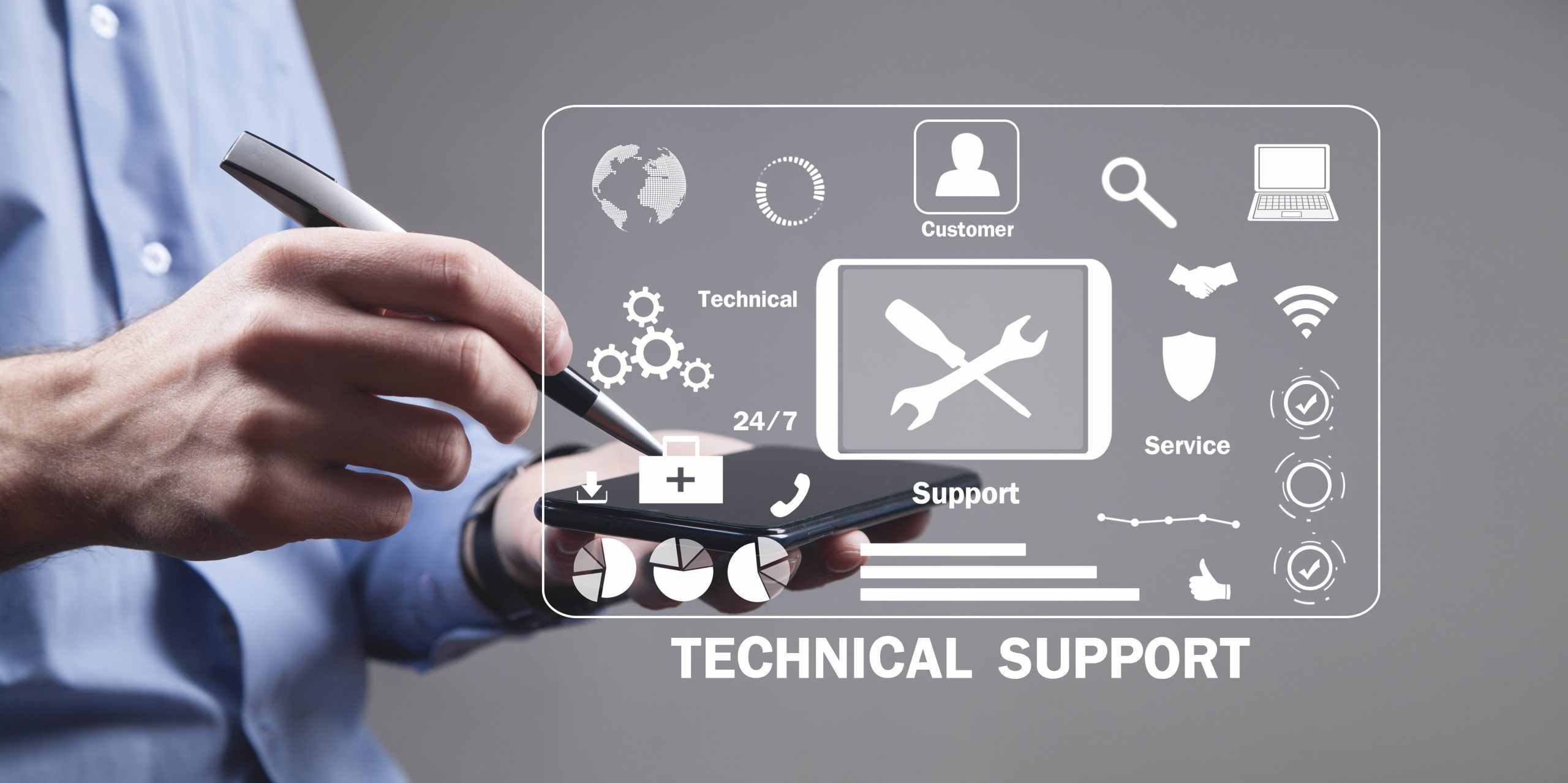Introduction
In today’s digitally driven world, businesses of all sizes are constantly seeking innovative ways to streamline their operations, enhance productivity, and stay ahead of the competition. At the heart of this pursuit lies the realm of Information Technology (IT) solutions—a dynamic landscape encompassing a myriad of tools, technologies, and strategies designed to address the diverse needs of modern organizations. From cloud computing and cybersecurity to data analytics and enterprise software, IT solutions play a pivotal role in shaping the way businesses operate and evolve in the digital age.
Understanding IT Solutions
At its core, IT solutions refer to a comprehensive suite of technologies, services, and practices aimed at optimizing various aspects of an organization’s IT infrastructure and operations. These solutions encompass a broad spectrum of offerings, ranging from hardware and software to consulting services and managed IT support. Whether it’s deploying cutting-edge software applications to streamline workflows or implementing robust cybersecurity measures to safeguard sensitive data, IT solutions are instrumental in driving efficiency, innovation, and growth across industries.
The Evolution of IT Solutions
The landscape of IT solutions has evolved significantly over the years, driven by rapid advancements in technology and changing business requirements. In the past, IT solutions primarily revolved around on-premises infrastructure, with organizations investing heavily in servers, networking equipment, and software licenses to support their operations. However, the emergence of cloud computing has revolutionized the way IT services are delivered and consumed, offering unparalleled scalability, flexibility, and cost-effectiveness.
Today, businesses have access to a vast array of cloud-based IT solutions, ranging from Infrastructure as a Service (IaaS) and Platform as a Service (PaaS) to Software as a Service (SaaS) and Everything as a Service (XaaS). These solutions empower organizations to rapidly deploy and scale IT resources on-demand, without the need for upfront capital investment or complex infrastructure management. Whether it’s hosting mission-critical applications in the cloud or leveraging cloud-based collaboration tools for remote work, cloud computing has become an indispensable component of modern IT strategies.
Key Components of IT Solutions
IT solutions encompass a diverse range of components and technologies, each serving a specific purpose in addressing the unique needs of businesses. Some of the key components include:
-
Networking Infrastructure: Networking forms the backbone of any IT ecosystem, enabling seamless communication and data transfer between devices and systems. IT solutions in this domain encompass technologies such as routers, switches, firewalls, and wireless access points, along with networking protocols and standards to ensure reliability, security, and performance.
-
Cybersecurity: With the proliferation of cyber threats and data breaches, cybersecurity has become a top priority for organizations across industries. IT solutions in this realm include a comprehensive suite of tools and practices aimed at protecting sensitive information, mitigating security risks, and ensuring regulatory compliance. From antivirus software and intrusion detection systems to encryption protocols and security awareness training, cybersecurity solutions play a critical role in safeguarding digital assets and maintaining trust with customers.
-
Cloud Computing: As mentioned earlier, cloud computing has transformed the way businesses leverage IT resources, offering unprecedented scalability, agility, and cost-efficiency. Cloud-based IT solutions encompass a wide range of services, including cloud storage, compute resources, databases, and development platforms. Whether it’s migrating legacy applications to the cloud or building cloud-native solutions from the ground up, organizations can harness the power of cloud computing to drive innovation and accelerate digital transformation.
-
Data Analytics: In today’s data-driven economy, organizations are increasingly relying on data analytics to gain valuable insights into customer behavior, market trends, and business performance. IT solutions in this domain encompass a variety of tools and techniques for collecting, processing, and analyzing large volumes of data. From business intelligence dashboards and predictive analytics models to machine learning algorithms and data visualization tools, data analytics solutions empower organizations to make informed decisions and unlock new opportunities for growth.
-
Enterprise Software: Enterprise software plays a crucial role in supporting core business functions, such as accounting, human resources, customer relationship management (CRM), and supply chain management. IT solutions in this category include a wide range of off-the-shelf and custom-built software applications tailored to the specific needs of different industries and business processes. Whether it’s deploying an enterprise resource planning (ERP) system to streamline operations or implementing a customer service platform to enhance engagement, enterprise software solutions enable organizations to optimize workflows, improve efficiency, and deliver exceptional customer experiences.
The Benefits of IT Solutions
The adoption of IT solutions offers a myriad of benefits for organizations seeking to modernize their operations and stay competitive in today’s fast-paced business environment. Some of the key benefits include:
-
Increased Efficiency: By automating repetitive tasks, streamlining workflows, and optimizing resource utilization, IT solutions help organizations operate more efficiently and effectively. Whether it’s reducing manual data entry with workflow automation tools or optimizing server utilization with virtualization technologies, IT solutions enable businesses to do more with less and achieve better results in less time.
-
Enhanced Productivity: By providing employees with access to cutting-edge tools and technologies, IT solutions empower them to collaborate more effectively, communicate seamlessly, and focus on high-value tasks. Whether it’s enabling remote work with cloud-based collaboration platforms or equipping sales teams with mobile CRM applications, IT solutions enhance productivity and enable teams to achieve their goals more efficiently.
-
Improved Decision-Making: With access to real-time data and advanced analytics capabilities, IT solutions enable organizations to make data-driven decisions and respond quickly to changing market conditions. Whether it’s identifying emerging trends with predictive analytics or optimizing inventory levels with supply chain management software, IT solutions provide valuable insights that drive informed decision-making and strategic planning.
-
Enhanced Security and Compliance: With the rise of cyber threats and data breaches, cybersecurity has become a top priority for organizations across industries. IT solutions help organizations strengthen their security posture, mitigate risks, and ensure compliance with regulatory requirements. Whether it’s implementing multi-factor authentication to protect against unauthorized access or encrypting sensitive data to prevent data breaches, IT solutions help organizations safeguard their digital assets and maintain trust with customers.
-
Scalability and Flexibility: With cloud computing and other scalable IT solutions, organizations can rapidly scale their IT resources up or down to meet changing business needs. Whether it’s accommodating seasonal spikes in demand with elastic cloud resources or expanding into new markets with minimal upfront investment, IT solutions provide the scalability and flexibility that organizations need to adapt and thrive in a dynamic business environment.
Conclusion
In conclusion, IT solutions play a pivotal role in driving innovation, efficiency, and growth across organizations of all sizes and industries. From cloud computing and cybersecurity to data analytics and enterprise software, IT solutions encompass a diverse range of tools, technologies, and strategies aimed at addressing the unique needs of modern businesses. By leveraging these solutions effectively, organizations can streamline their operations, enhance productivity, and stay ahead of the competition in today’s digital landscape. As technology continues to evolve, organizations that embrace IT solutions and adapt to changing market dynamics will be well-positioned to succeed in the digital age.





